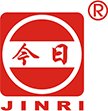What Are D Rings?
D rings are versatile hardware components widely used across industries, from outdoor gear and fashion to automotive and industrial applications. Their simple design and strong performance make them an essential connecting and fastening tool. Understanding what D rings are, how they are made, and where they are applied can help buyers and manufacturers make informed decisions when sourcing these products.
Definition of D Rings
A D ring is a metal or plastic loop shaped like the capital letter “D.” It usually consists of a straight side and a rounded side, which together form a secure anchor point for straps, ropes, or fabric. The straight side provides stability when sewn into materials such as webbing, while the curved side allows smooth movement of belts or straps without causing damage.
Materials Used in D Rings
D rings are manufactured using a range of materials depending on the application:
Steel – Offers maximum strength, often plated with nickel, chrome, or zinc to resist corrosion.
Stainless steel – Highly durable and rust-resistant, suitable for outdoor and marine environments.
Brass – Provides good corrosion resistance with a more decorative appearance.
Plastic or nylon – Lightweight and cost-effective for bags, backpacks, or lighter loads.
Each material is selected based on the strength requirements, cost considerations, and environmental conditions.
Sizes and Load Capacity
D rings are available in many sizes, typically ranging from small ½ inch options for garments and accessories to heavy-duty 2 inch or larger models for industrial use. The load capacity varies according to material and thickness. For instance:
Lightweight plastic D rings may hold less than 20 kg.
Medium steel D rings often support 100–300 kg.
Heavy-duty forged stainless steel D rings can handle loads exceeding 1,000 kg.
Knowing the weight requirements is critical for choosing the right D ring.
Manufacturing and Quality Control
High-quality D rings are often produced using precision CNC machines, forging, or casting. After forming, they may undergo processes like polishing, electroplating, or coating to enhance durability and surface finish. Manufacturers also perform tensile strength tests to ensure the D rings meet industry standards, particularly for safety-related uses such as climbing gear or automotive cargo control.
Common Applications of D Rings
1. Outdoor and Sports Equipment
D rings are widely used in backpacks, harnesses, and tents to secure straps and ropes. Their ease of use makes them reliable for quick adjustments during hiking, camping, or climbing.
2. Fashion and Accessories
Belts, handbags, and shoes often feature D rings as both functional connectors and decorative elements. The polished look of brass or stainless steel versions adds to the product’s design value.
3. Automotive and Cargo Control
In trucks, trailers, and cars, heavy-duty D rings serve as tie-down anchors for securing cargo. Weld-on or bolt-on D rings ensure goods remain stable during transportation.
4. Marine Applications
Stainless steel D rings are popular in boating for attaching sails, ropes, or safety harnesses. Their corrosion resistance is critical in saltwater conditions.
5. Industrial and Safety Gear
Safety harnesses, fall protection systems, and lifting slings rely on strong D rings to connect straps and hooks. These rings must meet strict safety standards to protect workers.
6. Pet Products
Collars, leashes, and harnesses often use D rings as the main attachment point for leads. Strength and smooth edges ensure safety and comfort for animals.
Advantages of Using D Rings
Versatility – Suitable for multiple industries and applications.
Durability – High load-bearing capacity and long service life.
Ease of Integration – Simple to sew, weld, or bolt into products.
Custom Options – Available in different sizes, shapes, and finishes to match specific needs.
Conclusion
D rings are more than just small pieces of hardware; they are critical components that enhance the functionality, safety, and appearance of countless products. Whether used in outdoor gear, industrial equipment, or fashion accessories, the strength and reliability of a D ring make it an indispensable solution. When sourcing D rings, it is important to consider the material, size, and application to ensure optimal performance and safety.



